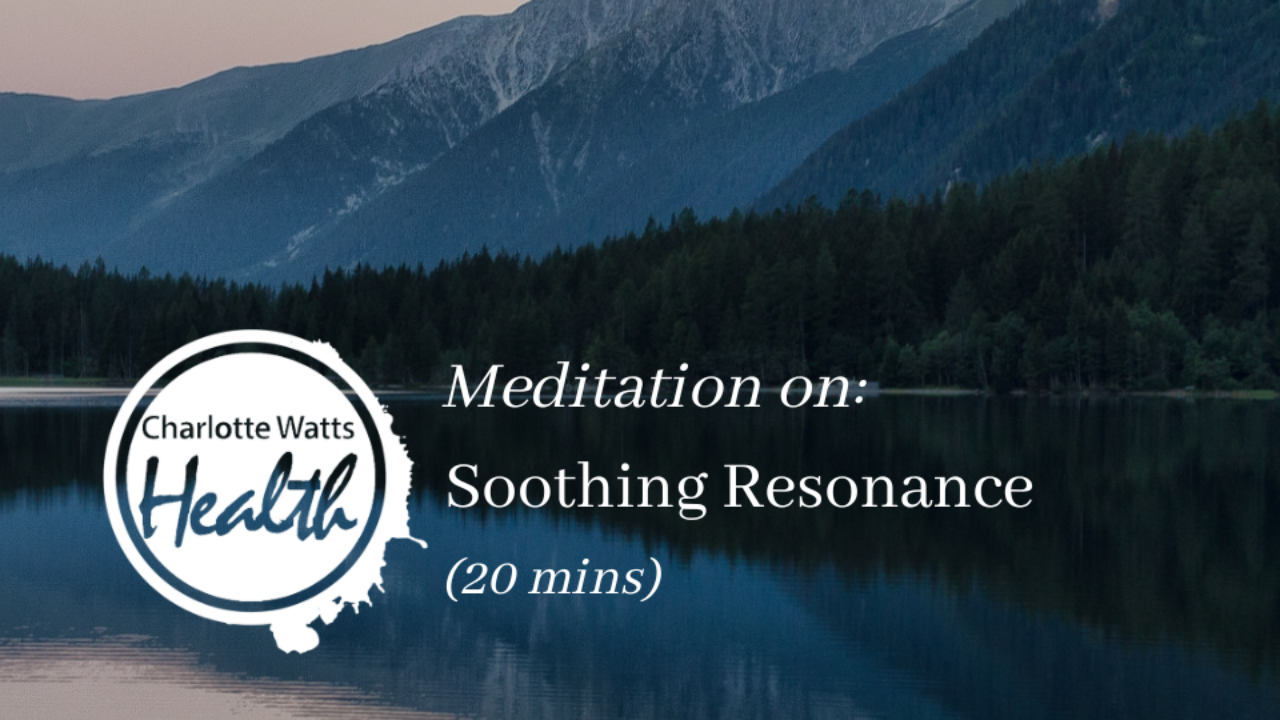The Therapeutic Movement class above is an example of a recorded class from the Whole Health archive.
In this Somatic and Mindful Yoga practice, we explore how the quality of our movements, such as spiralling, pulsing, and rebounding, can support ease, flexibility and strength in our joints and connective tissues. The accompanying blog describes the story of the practice to highlight how we can meet our bodily selves with curiosity and ease, for structure and stability that foster strength without stress, exhaustion or injury.
 We take a journey from the ground to standing that follows the evolution of our bodily growth and movement patterns. Along the way, with primal and functional movement, we also bring in simple actions like rubbing or squeezing the hands help bring awareness to the joints and periphery, where tension can easily build without us even noticing. These small gestures start to invite release and presence into the practice.
We take a journey from the ground to standing that follows the evolution of our bodily growth and movement patterns. Along the way, with primal and functional movement, we also bring in simple actions like rubbing or squeezing the hands help bring awareness to the joints and periphery, where tension can easily build without us even noticing. These small gestures start to invite release and presence into the practice.
The practice complements the theme of Ch...
The video above covers the self-care content for day 4 of the Whole Health 10 Day Spring Growth Reset programme.
Themes covered in the video:
- Recognising the overwhelm to our nervous systems that technology creates, often without us even noticing.
- Creating awareness around the addictive nature of the screen, including how we often regulate to a screen and attend to our self-regulation less and less.
- With so much screen time so normalised now, we need even more consciousness around coming back to reality and practicing simply being with ourselves in the here and now…
Recognising the addictive qualities of screens, smartphones and social media
- Unrelenting 'connection' creates expectations of constant novelty, and the brain seeks yet more..
- This sets up increasing habits of constantly seeking, comparison, judgement, information gathering and the security of ‘knowing’ more - less capacity with be with space, ambiguity, wonder, possibility and even the creativit ...
Like snacks, drinks have become a massive industry and yet it is easy to be dehydrated if we take in too little water through the most natural route: whole vegetables and fruits. Insufficient hydration impacts all aspects of health, but felt most obviously as fatigue (where we may turn to caffeine to keep going) and a lessened ability to cope with stress.
 Hydration as part of our capacity to self-soothe:
Hydration as part of our capacity to self-soothe:
See moving meditation practice at the bottom of the page.
Separation from the natural world
 As the need to protect our environment becomes more pressing than ever, understanding its importance for the healthy function of our bodies and minds can highlight our need to feel part of nature.
As the need to protect our environment becomes more pressing than ever, understanding its importance for the healthy function of our bodies and minds can highlight our need to feel part of nature.
A closer relationship to the natural world is always beneficial, on any level. Urban living puts us into the constant alert state of hypervigilance, as evidenced by a 21% increased risk of anxiety disorders, 39% increased risk of mood disorders in towns, and incidence of schizophrenia twice as high for those raised in cities (Peen et al 2010 ). Another study showed that the brains of those living in cities were more active in two areas; the amygdala, the danger centre of the brain and the cingulate cortex, involved in controlling emotion and dealing with environmental adversity – a recipe for depression and anxiety (Lederbogen et al 2011).
Much of the research in this area has focused on the ...
The Therapeutic Movement class above is supported by the information below - it is from the Whole Health archive.
Our immune system thrives on movement, specifically, the ease and flow within our tissues.
The lymphatic system, deeply intertwined with both immune communication and detoxification, plays a crucial role in maintaining our body’s resilience. However, its function is directly influenced by the nervous system, particularly our ability to shift out of heightened stress responses and into a state of relaxation.
Encouraging Lymphatic Flow Through Movement
By moving key areas where lymph nodes are concentrated - such as the neck, vagus nerve, collarbones, solar plexus, belly, and groin - we support circulation and help clear stagnation. These areas feed into the larger lymphatic channels, including those in the legs, ensuring that fluid movement is optimised throughout the body.
A Flowing Practice for Lymphatic Health
A well-sequenced movement pract...

The podcast above supports the following information:
Seeking Comfort Over Health
 Have you ever found yourself reaching for foods that you know don’t make you feel great? It’s a common pattern, whether it’s sugar, caffeine, or processed snacks, many of us crave things that don’t necessarily support our health. One of the main reasons we gravitate toward these foods is not because of their nutritional value, but because they provide instant comfort. In moments of stress, fatigue, or emotional discomfort, we often use food as a quick fix, a form of self-medication. This is a well-established pattern in human behaviour, particularly in addictive tendencies. Dr. Gabor Maté, a leading expert in trauma and addiction, explores this in books like When the Body Says No and In the Realm of Hungry Ghosts. He explains how many of our cravings stem from deeper emotional and psychological needs that remain unmet.
Have you ever found yourself reaching for foods that you know don’t make you feel great? It’s a common pattern, whether it’s sugar, caffeine, or processed snacks, many of us crave things that don’t necessarily support our health. One of the main reasons we gravitate toward these foods is not because of their nutritional value, but because they provide instant comfort. In moments of stress, fatigue, or emotional discomfort, we often use food as a quick fix, a form of self-medication. This is a well-established pattern in human behaviour, particularly in addictive tendencies. Dr. Gabor Maté, a leading expert in trauma and addiction, explores this in books like When the Body Says No and In the Realm of Hungry Ghosts. He explains how many of our cravings stem from deeper emotional and psychological needs that remain unmet.
The Cycle of Normalisation
 Our bodies and minds adapt to patterns, ...
Our bodies and minds adapt to patterns, ...
Tuning in to what you need
As a society we are often conditioned to push through pain and fatigue and simply keep going, ignoring the signs our body is giving us to slow down. In fact, much of our conditioning is that doing more, and doing it faster, is better. In reality, high expectations and comparisons mean we often lose sight of how much we nest to rest and recover – this can be particularly seen in people’s attitudes to exercise, where pushing in past our boundaries can add into a picture that can lead to injury, exhaustion and even burnout. In a culture where we can get caught up bouncing between extremes of overwhelm and collapse, a more considered and rounded viewpoint can help us tune in to our deeper needs and find that middle way between action and regeneration. The way we move and express through our bodies can help us tune in to what we feel and need – if we are taking the time to attune to ourselves.
Our whole wellbeing (physical, emotional and mental are always interl...
A bowl of soup, stew or curry can be a great comforter or hydrating light meal at any time we feel we need some inner warmth.
Nourishment through food isn't simply about the nutrients we take in, but the taste, sense of satisfaction and sensory experience. This is part of nutrition as safety, not just tuning in to our personal, intuitive feelings for what our system feels open to receiving, but also as the deep and satisfying nourishment that calms and soothes.
In autumn or winter, the bowl of soup or stew can warm us in a very real way from the inside out. When we were moving into the first colder months of spring, it can help us transition from more dense eating in the colder months towards the lighter eating of summer. Soup can be a really welcome light evening meal if we are giving our digestion a rest towards bed for full gut healing, detoxification of tissues and cells, and immune replenishment overnight.
There has even been research on the comforting qualities of a bowl of ...
Choosing food that supports our health is one of the most accessible routes to self-care, but is not always the one we gravitate towards when we’re feeling tired, agitated or low.
 When we look back over a few days’ or weeks’ habits we can often gauge if we were “looking after ourselves” or simply following habits that seemed a little easier at the time or had a numbing or self-medicating effect. One of the easiest ways we can cultivate self-kindness is through the food we eat, but when stress hits it can send us towards what we want in the moment, rather than what we know we need in the long-term.
When we look back over a few days’ or weeks’ habits we can often gauge if we were “looking after ourselves” or simply following habits that seemed a little easier at the time or had a numbing or self-medicating effect. One of the easiest ways we can cultivate self-kindness is through the food we eat, but when stress hits it can send us towards what we want in the moment, rather than what we know we need in the long-term.
These can seem the antidote when we feel low in mood or energy, but more than the occasional cake or biscuit as a treat can send us round in craving cycles. It may feel good for a few moments but it's followed by the sugar high which we burn through quickly, closely followed by the sugar low - an energy slump. Ultimately if we do not recognise and break this pattern, we can create a relianc...

The podcast above supports the information below.
Embracing Change with Compassion: Finding Ease in Transformation
I recorded this podcast a few years ago (just before the chaos of Christmas!) and I find myself revisiting it as we transition into spring. It complements this month's Natural Health Webinar on Spring Eating, Growth and Renewal.
One of the few things we can rely on is that things are always changing. Most of this change is beyond our control and so can create resistance – a self-protective holding as we gauge whether the new and unfamiliar is safe, or not. During this explorative phase, whilst we experience a shift in the landscape, we might experience worry, even stress in the form of feeling disquieted, unsettled or even anxious. This is to draw our attention to the change in play; to prompt awareness where we might choose an attitude of curiosity over judgment. Tendencies to simply judge change as ‘good’ or ‘bad’ can shut down our capacity to go-with-the-flow and ad...

Soothing Resonance - humming or Bhrāmarī breath
This practice uses the yogic breathing technique Bhrāmarī breath - also known as 'black bee breath', it is named after the Hindu goddess of bees. The practice involves a humming on the outbreath to draw the attention inwards, as the vibration of the hum soothes the nervous system and quiets a busy mind.
Humming extends the exhalation, creating vibration in the upper torso and throat. The ‘mmm’ sound created vibrates into the cerebral cortex, said to nourish the pituitary gland for hormonal and nervous system regulation, as well as deactivating the fight-or-flight response (via the vagus nerve), and stimulating production of the neurotransmitter serotonin, which regulates our mood and sleep cycles. It has also shown to support communication through the heart-brain axis.
Humming can be brought in any time within a physical or meditative practice as a focus on inner vibration (spanda) particularly in the silence that follows. It is tradi...
Simple Home Oral Health Practices for Immune Defences, Heart and Cognitive Health
 Our mouths and throats are rich in immune defences - they need to be as they are entry points where most things that come into our bodies arrive. We both take in (food, drink, air, pollution, even smoke) and expel (air, speech, spit etc) through the mouth and throat, and as such busy junctions, they need continual maintenance. Beyond these more functional aspects, there is the resonance of words, language, song and chant – all enabled through our breath, this a truly expressive part of our whole system.
Our mouths and throats are rich in immune defences - they need to be as they are entry points where most things that come into our bodies arrive. We both take in (food, drink, air, pollution, even smoke) and expel (air, speech, spit etc) through the mouth and throat, and as such busy junctions, they need continual maintenance. Beyond these more functional aspects, there is the resonance of words, language, song and chant – all enabled through our breath, this a truly expressive part of our whole system.
The rich protective bacterial colony that lives on the linings of our mouth and throat is our oral microbiome. This host of beneficial bacteria is an extension of that in the gut, but less well-known, on our skin and in our lungs too - showing how all parts of us are intrinsically linked. These organisms are an important part of our body-wide immunity and communication. It is well known that compro...










